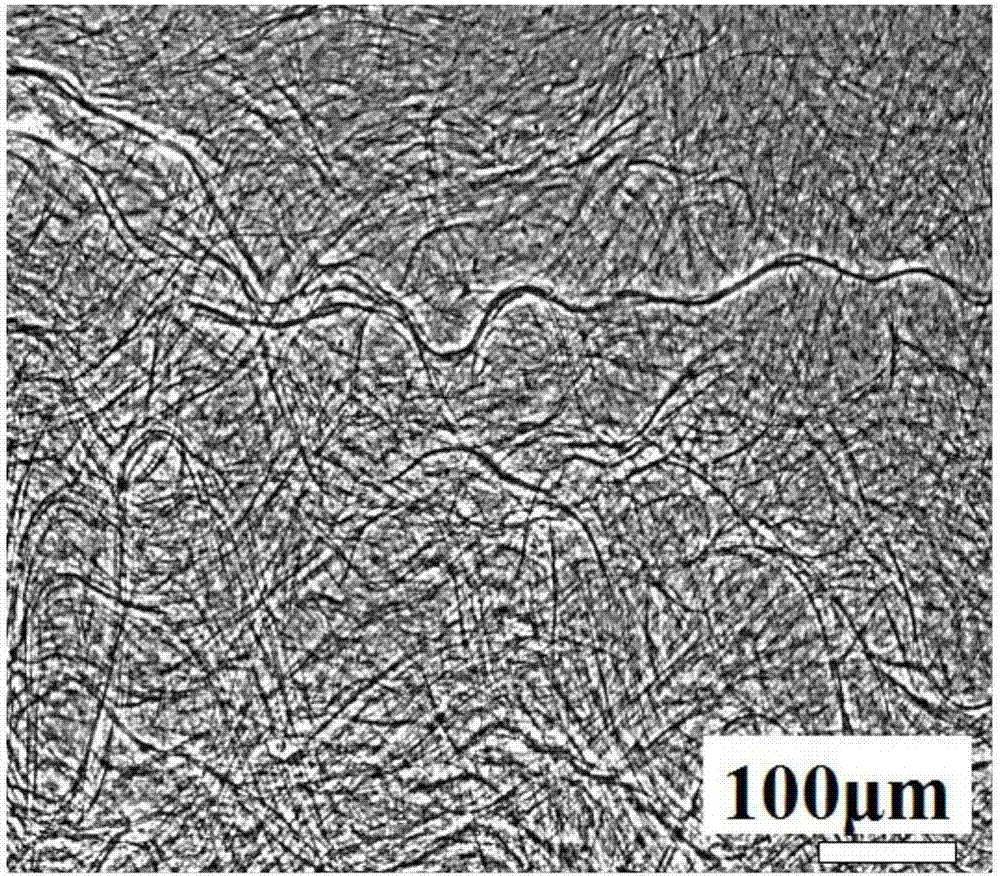Method of cryopreserving Schwann cells by using supramolecular hydrogel in restricted space
A technology of supramolecular hydrogel and Schwann cells, which can be applied in applications, preservation of human or animal bodies, animal husbandry, etc., can solve the problem of few studies on cryopreservation of supramolecular gels, and reduce cell penetration and volume Change damage, simple preparation, reduce damage effect
- Summary
- Abstract
- Description
- Claims
- Application Information
AI Technical Summary
Problems solved by technology
Method used
Image
Examples
Embodiment 1
[0036] Example 1: Preparation and performance study of supramolecular hydrogel
[0037] The gel factor dodecyl-Boc-L-tyrosine is synthesized with Boc-L-tyrosine methyl ester, DMF and bromododecane as raw materials, which is recorded as the gel factor BDT. The synthesis method of the gel factor is as follows:
[0038] (1) Synthesis of dodecyl-Boc-L-tyrosine methyl ester (BDTE) (Boc-L-tyrosine methyl ester alkylation):
[0039] Weigh 3.998g (0.0135mol) Boc-L-tyrosine methyl ester into a 25mL round-bottomed flask, add 10ml DMF, and add 3.7113g K after the raw materials are completely dissolved 2 CO 3 (0.027mol) as an acid binding agent, 4mL of bromododecane (0.0167mol) was added, and the reaction was carried out at room temperature for 12h. After the completion of the reaction, 20 mL of water was added for washing, suction filtration, washing of the filter cake, and vacuum drying for 24 hours to obtain a white solid. Anhydrous ethanol (20ml) was recrystallized once to obtain a pure wh...
Embodiment 2
[0045] Example 2: Preparation of the microfluidic device and the morphology of the supramolecular hydrogel in the microfluidic device
[0046] The preparation of the microfluidic device mainly uses quartz glass capillaries purchased from Beijing Zhongcheng Quartz Glass Products Co., Ltd. The specific preparation process is as follows: insert a round capillary with a length of 40mm (inner diameter 0.4mm, outer diameter 0.7mm) into a polytetrafluoroethylene tube (inner diameter 1.0mm, outer diameter 1.3mm, purchased from Wuxi Haixin Plastic Products Co., Ltd.) In the joint, the joint is sealed by epoxy structural adhesive (purchased from ITW Devcon, USA) with a mass ratio of epoxy resin and silica gel of 1:1, and cured for about 30 minutes. Use scissors to make a small hole on the top of the polyurethane tube (inner diameter 2.0mm, outer diameter 2.8mm, purchased from Wuxi Haixin Plastic Products Co., Ltd.), and insert the other end of the PTFE tube into the polyurethane tube from ...
Embodiment 3
[0049] Example 3: Cryopreservation of Rat Schwann Cells
[0050] 1. Cell acquisition and culture: Schwann cells (ATCC:CRL:2765) are extracted and provided by the Hubei Biomaterials Engineering Technology Research Center from healthy adult male rats. Use a 25mL T-type culture flask to culture Schwann cells in RPMI1640 medium containing 10vol% fetal calf serum and 1vol% double antibody. Place the culture flask in a 5% CO 2 , And the temperature can be maintained continuously in the cell culture box at 37℃. The cells adhere to the wall and proliferate in the culture flask. When the cells proliferate to the bottom of the culture flask and there is no gap, add trypsin (0.25vol%) for digestion to suspend the adherent cells, transfer the cell suspension containing trypsin into a centrifuge tube, and centrifuge at 1000r / min for 8min. Aspirate and discard the supernatant, add the complete medium again and blow off the cells, inoculate the cells into multiple culture flasks, and continue ...
PUM
| Property | Measurement | Unit |
|---|---|---|
| Depth | aaaaa | aaaaa |
| Phase transition temperature | aaaaa | aaaaa |
Abstract
Description
Claims
Application Information
 Login to View More
Login to View More - R&D
- Intellectual Property
- Life Sciences
- Materials
- Tech Scout
- Unparalleled Data Quality
- Higher Quality Content
- 60% Fewer Hallucinations
Browse by: Latest US Patents, China's latest patents, Technical Efficacy Thesaurus, Application Domain, Technology Topic, Popular Technical Reports.
© 2025 PatSnap. All rights reserved.Legal|Privacy policy|Modern Slavery Act Transparency Statement|Sitemap|About US| Contact US: help@patsnap.com



